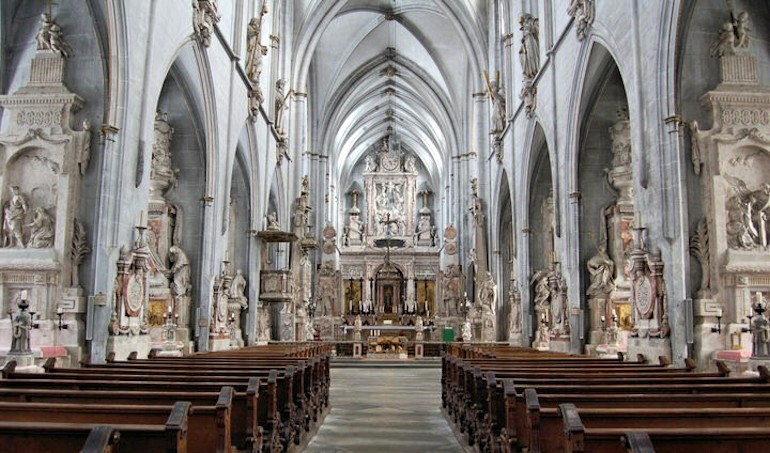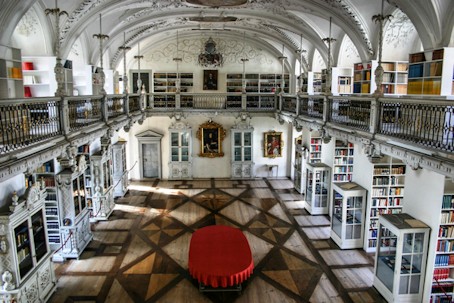
The Salem Cistercian monastery was founded in 1137/1138. From the monastery Lützel near Basel came 12 monks and the abbot Frowin.
As the imperial abbey of Salem, it became one of the most prosperous and important imperial abbeys in the Lake Constance region (Baden-Württemberg).
In the 17th century the abbey was almost completely destroyed by fire and rebuilt in the baroque style (1697-1706 by Franz Beer from Vorarlberg). The church was largely spared.
In 1804 the monastery passed into the possession of the Margraves of Baden through secularisation. Since then the complex has borne the name "Schloss Salem" and has served as the residence of the margravial family and, since 1920, as the seat of the Schloss Salem boarding school.
The baroque garden
The High Gothic Minster dates from 1285-1414, preceded by a group of Cistercians who paid a visit.
Until 1803 the Salem Minster housed three baroque organs built by the organ builder Karl Joseph Riepp, who, following the example of the Alsatian Andreas Silbermann, created important organs from his workshop in Dijon/Burgundy from 1736 onwards.
After the completion of the organs in Ottobeuren, Riepp built the largest organ in the Salem Cathedral by order of Abbot Anselm II. It comprised a total of nine manuals and three pedal works distributed over three instruments. The tabernacle organ (north organ) had an additional console in the choir stalls for the main organ and pedal.
Riepp devised a special rarity for the wind production of the tabernacle organ: he used an extra underground stream to drive the bellows.
Due to the consequences of secularisation, the sale of the two transept organs to the Evangelical parish church of Winterthur and the church of St. Stephen in Constance destroyed the most important and interesting achievement in organ building in southern Germany.
In 1901, the organ builder Wilhelm Schwarz from Überlingen built a large romantic organ with three manuals and pedal and 38 stops behind the baroque façade that remained in Salem

The interior, which was designed in the rococo style between 1720 and 1765, was modified between 1769 and 1783 according to the classicist style. The furnishings include classicist choir stalls, early baroque wooden sculptures of the twelve apostles and a late gothic sacramental house.
Abbey building
The St. Bernard's Corridor with its wonderful stucco work belongs to the cloister of the inner courtyard and connects the cathedral with the convent building.
IThe Emperor's Hall with its Baroque stucco work and sculptures from around 1707 contains the statues of 16 Roman-German emperors and busts of 16 popes, in whom the monastery saw its most important patrons.

The two-storey library hall in the west wing is decorated with ceiling stucco by Franz Joseph Feuchtmayer and has classicist furnishings from Johann Georg Wieland's workshop.
